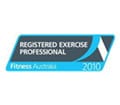Balance exercises are often overlooked as an important exercise but you can get some great results from some very simple balance exercises. The benefits include –
- Core strength
- Stability
- Injury prevention
- Sporting performance improvements
- Faster response times
Here is a transcript of this video on Balance Exercises
Sally: Hi, I’m here with Cameron Corish from Core Health Coaching and today we are looking beginner balance exercises.
Cameron: Hi
Sally: Now just before Cameron said to me why is balance important? I said because you don’t fall down then, but I mean I use balance because I think it’s fun, you can burn more calories but there’s a whole other range of reasons why you might do balance exercises as he’s going to tell us about.
Cameron: A lot of people are not really sure why balance is important. For a start, for older people balance is really important about not falling over. You can have a lot of injuries based on falling over, that fairly classic but when we’re talking about injury prevention is that if your muscles through your ankles and through your feet are stronger, you’re less likely to have lower back problems. Definitely the stronger that you are around through that ankle complex and those balance exercises are really going to reduce your injuries. From a performance perspective, what we were talking about before is you could lift a heavy weight and do really heavy squats, but if you haven’t got your balance you can’t lift the same amount. The work that you do in regards to your lunges or your squats will significantly improve with getting a little bit more around the neurological development and that’s what balance is all about.
Lets Test your Balance
I’ll start off with just testing your balance. The first thing that we’re going to do is just stand on one leg. Lift one leg up great and then close your eyes. Now how long you go for this really determines whether or not you need to do a lot of balance work. Probably looking about five to 10 seconds.
Sally: The wind was blowing.
Cameron: That’s it, it was a huge wind that blew you over. We’ll try the other leg. Sometimes what will happen, and close your eyes, is that you’ll find one side is not going to be as strong as the other. That’s the side that we would work more, ideally with your eyes closed 60 seconds is fantastic. If you’re five or 10 seconds you need to do a little bit more through your balance exercises.
Sally: I’ll be practicing my balance.
Cameron: You will now.
Sally: Yes I will now.
Cameron: One of the things that we’ve done, the test is actually then the exercise. What happens we stand on one foot, hold the balance and close our eyes and hold it for … If you come off just get back again. If you’re uncertain about the floor around you, if you’re worried that you’re going to fall over, stand close to something that you can actually hold, a tree or a wall or even something in front of you so then that way … Now you’re showing off. Definitely making sure that something’s close to you you’re comfortable with holding.That was good, so then what we can do is we can compress that up a little bit. We got a couple little tools here that we’re going to use. First one we’ve got is the Bosu ball.
Stability and Balancing Equipment
Editor: You can find some stability and balance equipment on our website.
Sally: My friend the Bosu, yes.
Cameron: You can actually start with this one doing a fairly wide stance through there. If you stand on one side through there and then on the other side, great. The wider your stance, the easier it actually is. Then and itself just make sure that the ankles are working a little bit harder with the balance and then Sally’s just going to move her feet a little bit closer to each other, make it a little bit harder, so there should be a little bit more wobble through the Bosu ball. That’s perfectly okay and a lot of people actually then start to really, their legs shake a little.
Sally: Yes, you see people yes.
Cameron: Even work it a little bit closer. You can start to see a little bit of wobble there, but Sally’s just a little bit too good so what we’ll do is now going to go to single leg. That’s it, now the other part to any sort of balance exercise is actually the coordination of the rest of the body. If your posture is out and you’re leaning forward, it’s going to be harder to balance. Always thinking about keeping your shoulders back, drawing in your belly button and really holding that core through there. The other part to that is actually the length between your glutes as well, your bottom, making sure your bottom is tight, core is tight and then the shoulders are back and then all of a sudden that just makes that easier, that exercise so much easier.
Sally: It’s almost imagining there’s a string pulling you up to the roof to have good posture, I’ve always thought. You think?
Cameron: Yes, perfect description. I think you’ve done this before.
Sally: Maybe.
DURAdisk
Cameron: We’ll jump off. That’s probably one of the first level tools that you can use. Second one is the DURAdisc. This is great because it’s a little bit closer to the ground, so some people feel a little more careful with that. We’ll just go straight into it, you can do both feet on this but we’ll go straight into a single.
Sally: Oh straight into a single.
Cameron: Yes and you can see there’s a little bit more movement there because you’re on a cushion of air so it’s just a little bit harder and you will notice that you’ll tend to fall in the same direction. That’ll show you where your strength is. If you’re generally falling, relying on the outside and you fall on the inside, you’re stronger on the outside part of the foot, so really try and concentrate on the inside, work the muscles on the inside part of that foot. As the whole exercise is represent it’s balance between left and right foot and the inside and outside part of your foot as well. Definitely it’s a little bit harder that one isn’t it.
Sally: That’s one’s harder. These are great, I often give these to my office worker clients to sit on during the day because they’re good for core stability. DURAdiscs yes.
Swiss Ball
Cameron: When we’re talking about that core stability then we go up to the next one, which is then using your Swiss ball.
Sally: Swiss ball.
Cameron: Just sitting on that facing the front and again what we do is we lift up one leg and what we’re doing is we’re relying on this one here is again, keeping the shoulders back, belly in and the first step is keeping your eyes open, second step is then closing your eyes making it just a little bit tougher. Obviously when we talk about the exercises, it’s the length of this exercise so that 60 minutes to two minutes.
Sally: 60 seconds.
Cameron: 60 minutes, go 60 minutes, 60 seconds to two minutes, thanks Sally. Then obviously focusing on the side that’s a little bit weaker. The next one there is actually taking both feet off the ground, really sitting back on the ball and this is where you really get to have an understanding of your balance or your stability and really working that core. You can see Sally’s just using one foot to go through there and keeping as still as you possibly can. Now obviously the right size Swiss ball’s really going to help through here as well is that the bigger the ball the easier that this one is, the smaller it’s just really tough to do. Again, you can’t do this exercise if your core is not switched on and your posture’s not in the right position.
Sally: I would say too, I don’t think … I think some pieces of exercise equipment you can buy cheap and nasty ones, I think with Swiss balls you can’t. You’ve got to buy a quality Swiss ball or you just can’t do the exercise, that’s what I think.
Cameron: I agree, so the next one then is actually on your knees. Again we’re just working our way up in regards to complexity. Again, core, glutes and the shoulders through there. This just trains your body in regards to adjusting really quickly and adjusting that balance, then maintaining that core strength. How do you go standing on it? Obviously this is a fairly difficult exercise so you need to be comfortable in the space around you, make sure everything’s fairly safe.
Sally: Don’t try that at home, no do but have a lot of pillows and things around.
Cameron: That takes us through a full range of stability type of exercises, balance exercises using a couple of different tools there.
Sally: Thanks Cameron.
Cameron: No problem, thank you.
Stability and Balancing Equipment




















[…] https://www.corehealthcoaching.com.au/balance-exercises/ […]